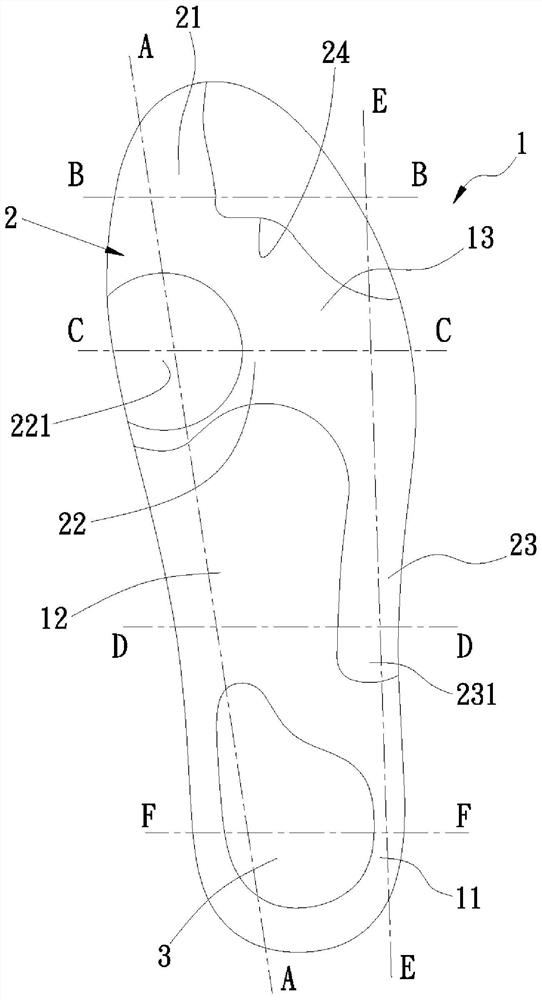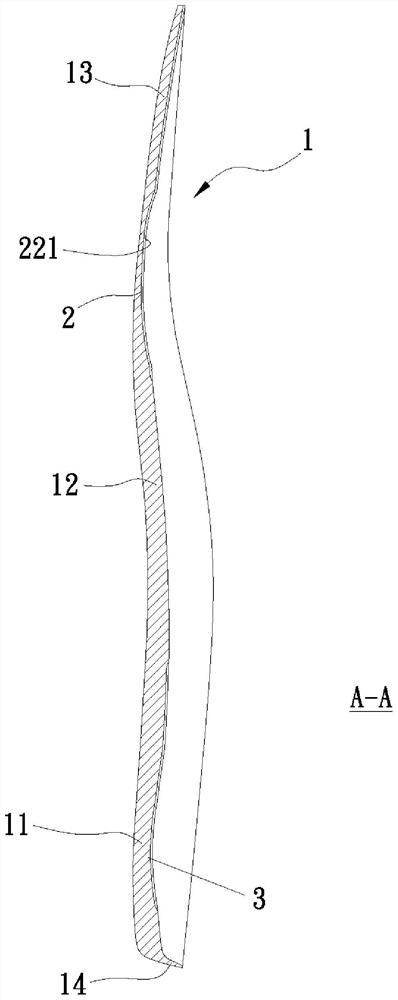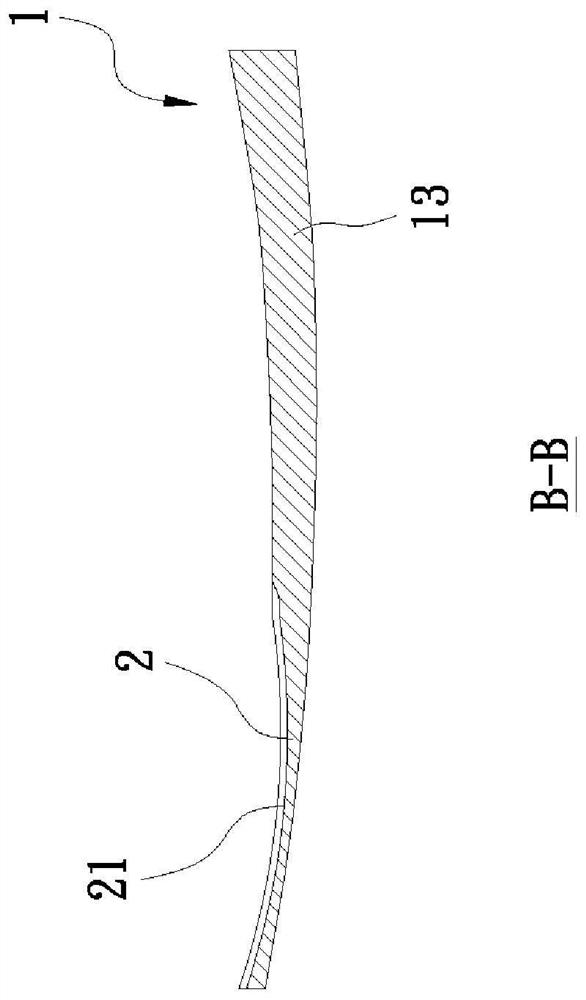Pressure-reduction insole structure
A technology of insole and thin pad is applied in the field of decompression insole structure, which can solve the problems of upper and lower dislocation, hindering the settlement of the sole of the foot, increasing the chance of sprains, etc., and achieves the effects of decompression in sports, easy and smooth movement, and strong stability.
- Summary
- Abstract
- Description
- Claims
- Application Information
AI Technical Summary
Problems solved by technology
Method used
Image
Examples
Embodiment Construction
[0050] In order to have a clearer understanding of the technical solutions, objectives and effects of the present invention, the specific implementation manners of the present invention will now be described with reference to the accompanying drawings.
[0051] First, see figure 1 As shown, it is a schematic diagram of the three-dimensional appearance of the decompression insole structure of the present invention, including:
[0052] An insole body 1, the insole body 1 includes a heel area 11, an arch area 12, and a forefoot area 13 that gradually become thinner from thicker, and the forefoot area 13 is tilted upwards, on the insole body 1 A guiding thin pad 2 is provided between the forefoot area 13 and the arch area 12, and a rear stabilizing thin pad 3 is provided in the heel area 11, wherein:
[0053] The guide thin pad part 2 includes a thumb segment 21 corresponding to the first phalanx a1 of the human foot, a thumb segment 21 connected to the thumb segment 21 and corres...
PUM
 Login to View More
Login to View More Abstract
Description
Claims
Application Information
 Login to View More
Login to View More - R&D
- Intellectual Property
- Life Sciences
- Materials
- Tech Scout
- Unparalleled Data Quality
- Higher Quality Content
- 60% Fewer Hallucinations
Browse by: Latest US Patents, China's latest patents, Technical Efficacy Thesaurus, Application Domain, Technology Topic, Popular Technical Reports.
© 2025 PatSnap. All rights reserved.Legal|Privacy policy|Modern Slavery Act Transparency Statement|Sitemap|About US| Contact US: help@patsnap.com



